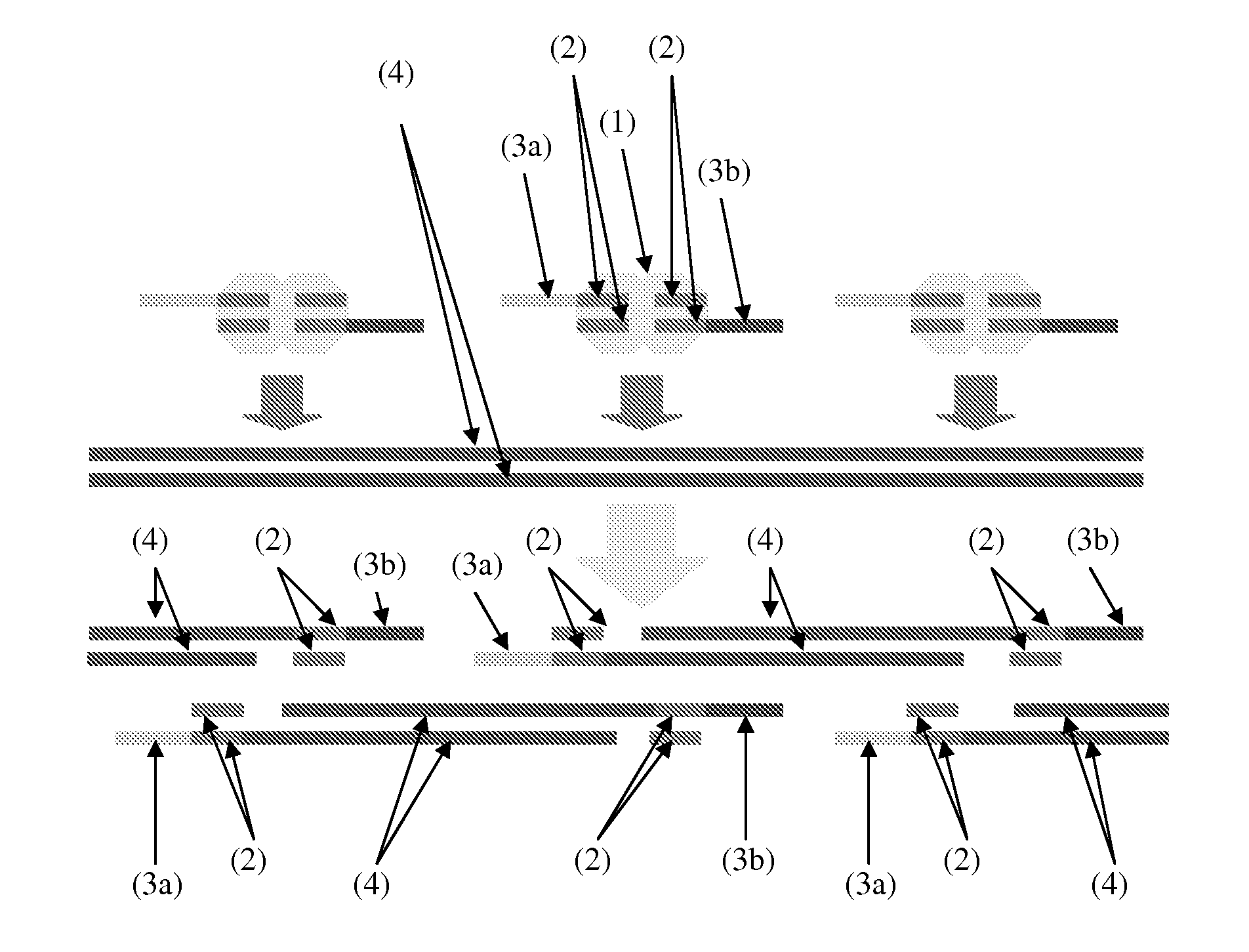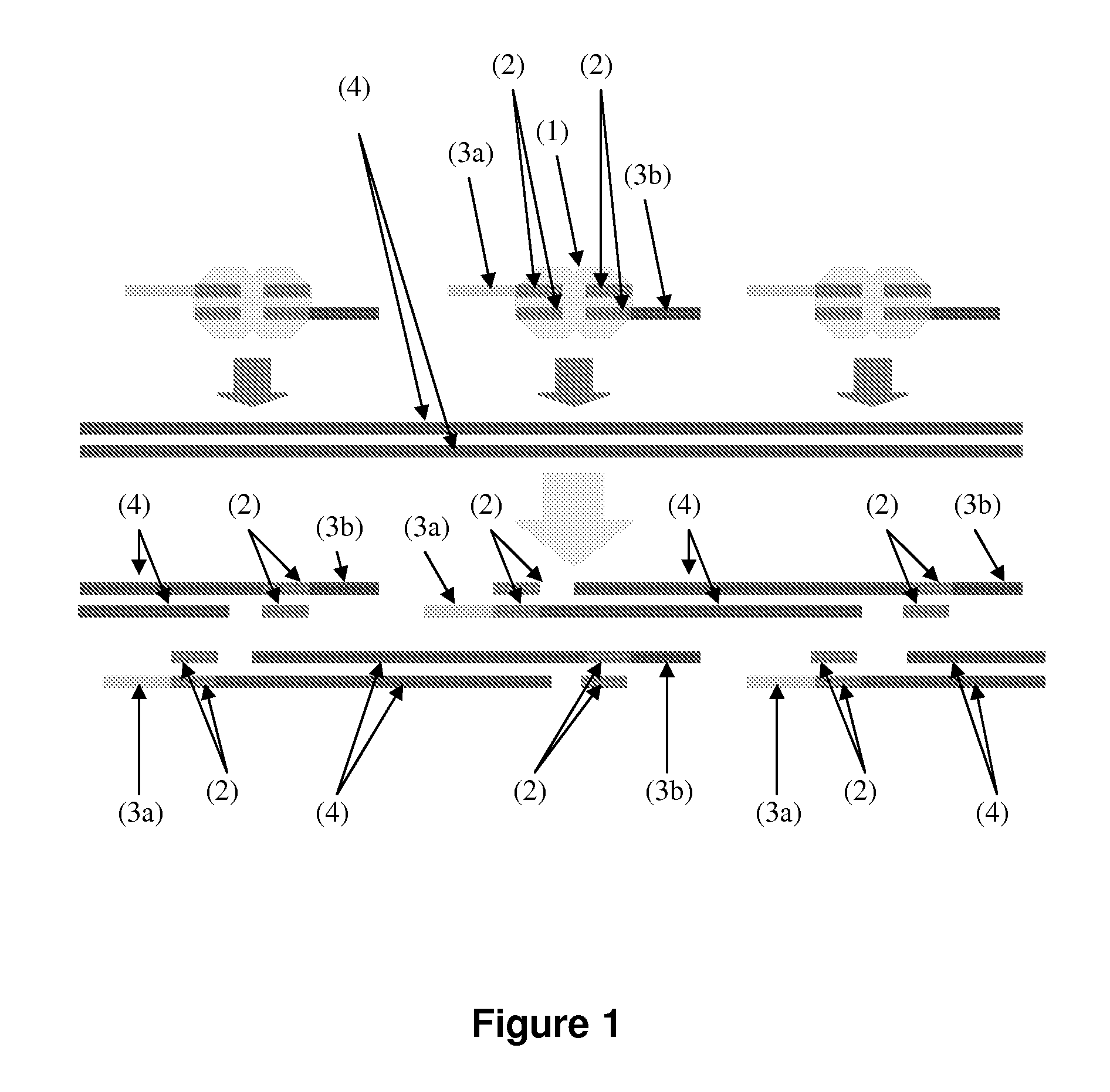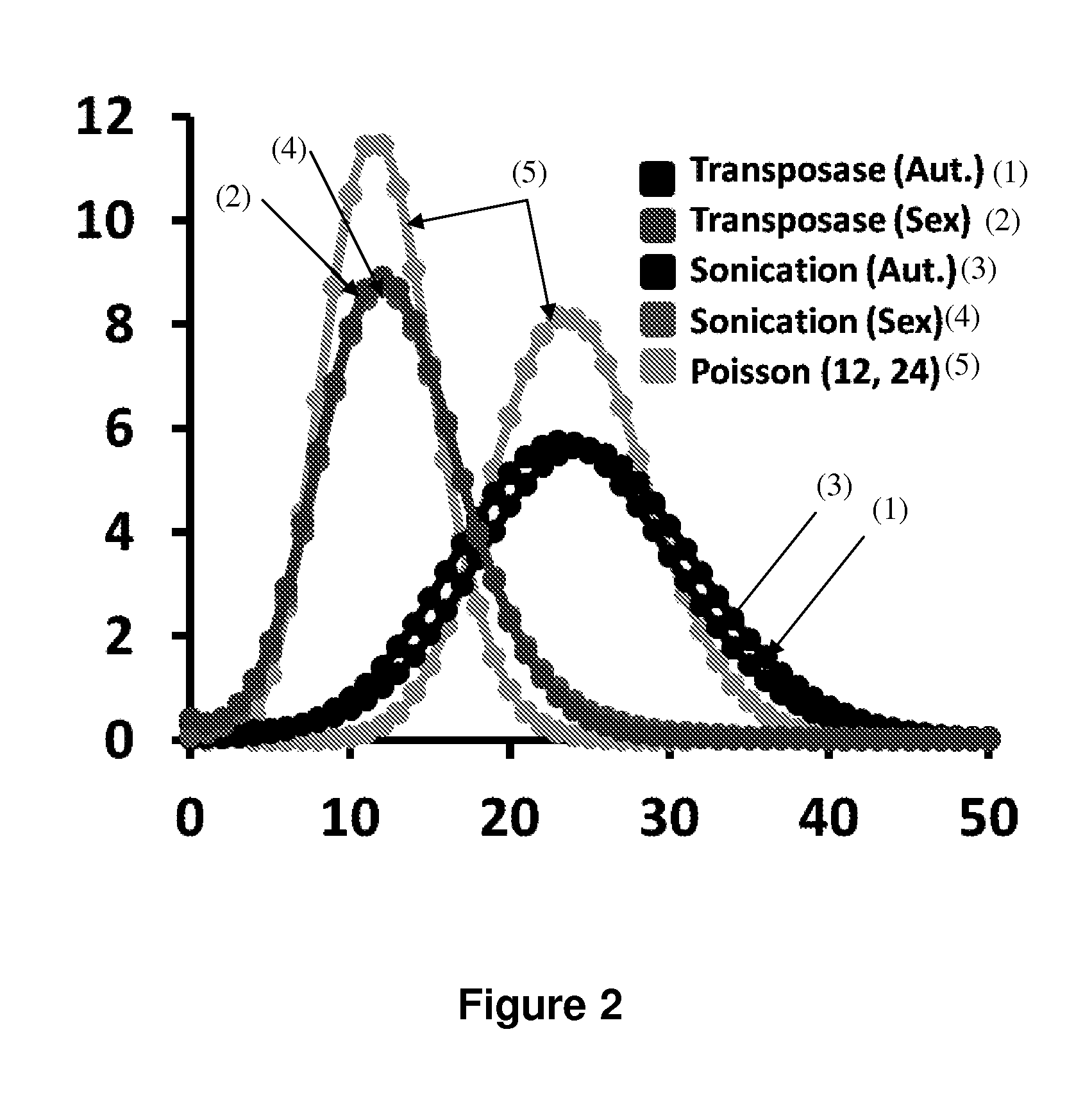Massively parallel contiguity mapping
a contiguity mapping and parallel technology, applied in the field of massively parallel contiguity mapping, can solve the problems of limited short-read sequencing and limited technology in terms of contiguity information that it generates, and achieve the effect of reducing the cost-per-base of sequencing
- Summary
- Abstract
- Description
- Claims
- Application Information
AI Technical Summary
Benefits of technology
Problems solved by technology
Method used
Image
Examples
example 1
Short-Range Contiguity
[0113]1.A. Symmetrically and Uniquely Tagging Fragmentation Events
[0114]The fragmentation of genomic DNA, whether by mechanical or enzymatic methods, results in a complete loss of information as to the pairing of molecules that derive from either side of any single “break”. To preserve this information, a method was devised to associate a unique barcode with both ends of fragments derived from each break introduced by in vitro transposition (FIG. 4). In brief, transposase may be used to catalyze in vitro insertion of synthetic transposons containing a degenerate single-stranded “bubble” flanked by nicking restriction endonuclease site into very low amounts of genomic DNA, i.e., less than 5 haploid human genome equivalents. In contrast with the approach described in FIG. 1, the synthetic transposons are continuous, containing the 19 bp ME sequences along with two endonuclease nicking sites flanking a 25 bp degenerate sequence. Since the degenerate region is not ...
example 2
Mid-Range Contiguity
[0153]2.A. Emulsion PCR with Droplet-Specific Barcodes
[0154]Emulsion PCR is well established, but the methods below require droplets containing reagents including primers with droplet-specific barcodes. These reagents can be generated through emulsion PCR of common sequences flanking a degenerate subsequence, with recovery of products to micron scale beads (FIG. 8) (Dressman et al. 2003). Specifically, large numbers of clonally amplified beads (each bearing a presumably unique barcode) may be generated by emulsion PCR with limiting dilution, followed by enrichment of “amplified” beads by hybridization (Shendure et al. 2005). These beads can be emulsified again for use in the below methods. Inclusion of a single clonally amplified bead per droplet, along with appropriate design of common sequences and emulsion PCR primers will result in the capture of barcoded amplicons to the beads themselves for convenient recovery.
[0155]2.B. Barcoding of “Pre-Transposed” HMW Ge...
example 3
Long-Range Contiguity
[0186]Methods for long-range contiguity, (e.g., 100 Kb-10 Mb) by in situ transposition into very HMW genomic DNA on the surface of a sequencing flowcell are developed using spatial information (i.e. the relative coordinates at which physically linked sequencing templates are immobilized), as opposed to capturing contiguity information to barcodes as described above.
[0187]Such methods are accomplished by (1) exploiting in situ transposition to obtain paired-end reads from arbitrarily large single DNA molecules, and (2) developing related methods whereby multiple reads along the full length of arbitrarily large single DNA molecules are obtained.
[0188]In one approach (FIG. 12b), HMW DNA molecules may be end-modified with an adaptor (FCA1), but are then hybridized to the flowcell without stretching. Long DNA molecules typically adopt a random coil configuration in solution. One end hybridizes, while the other end is spatially confined to an area proportional to the ...
PUM
 Login to View More
Login to View More Abstract
Description
Claims
Application Information
 Login to View More
Login to View More - R&D
- Intellectual Property
- Life Sciences
- Materials
- Tech Scout
- Unparalleled Data Quality
- Higher Quality Content
- 60% Fewer Hallucinations
Browse by: Latest US Patents, China's latest patents, Technical Efficacy Thesaurus, Application Domain, Technology Topic, Popular Technical Reports.
© 2025 PatSnap. All rights reserved.Legal|Privacy policy|Modern Slavery Act Transparency Statement|Sitemap|About US| Contact US: help@patsnap.com



